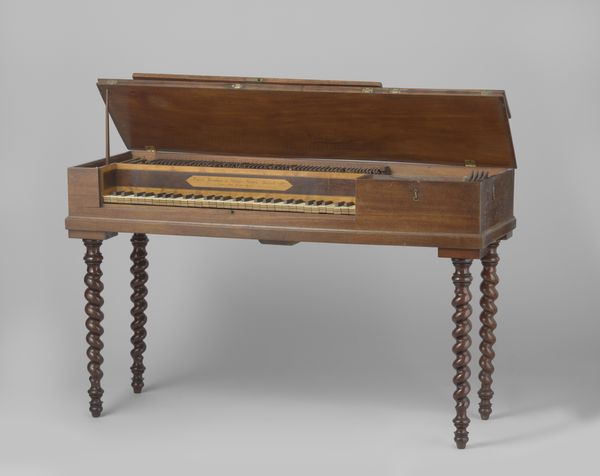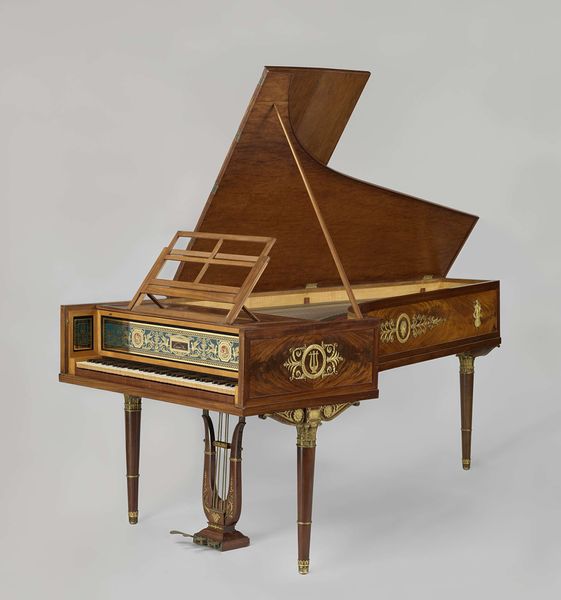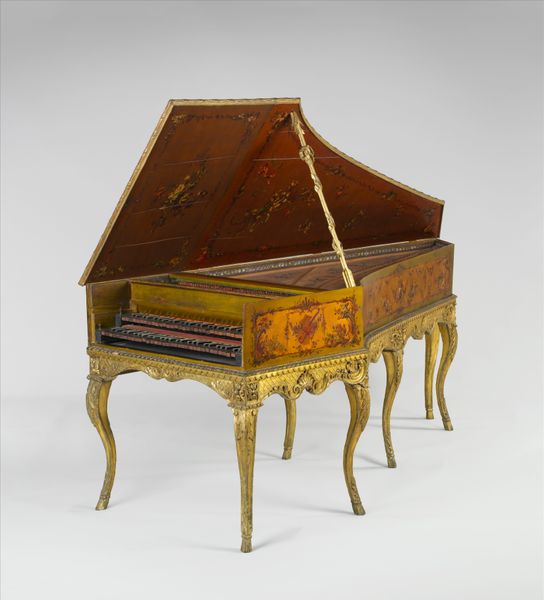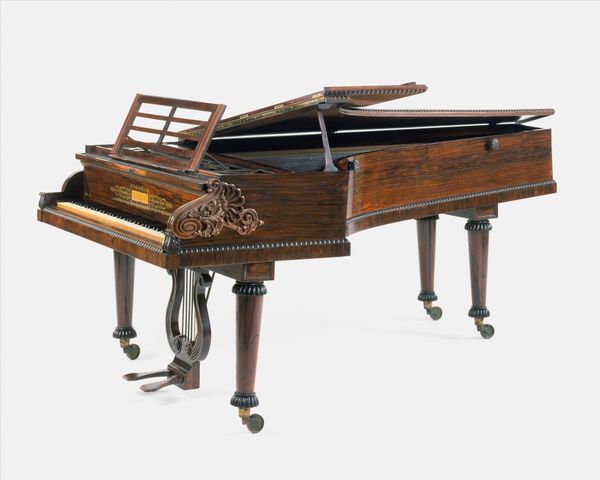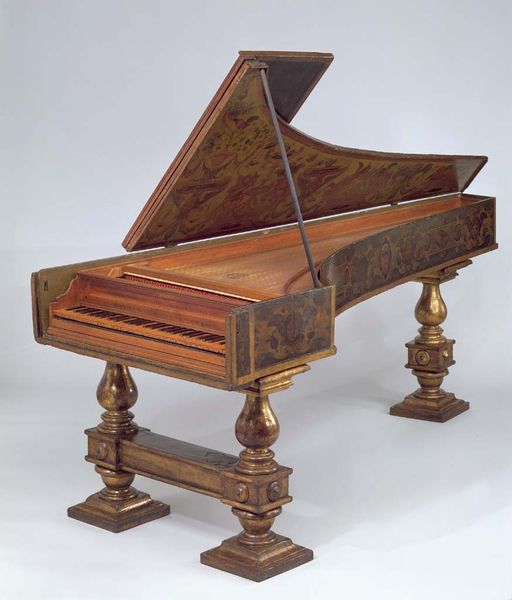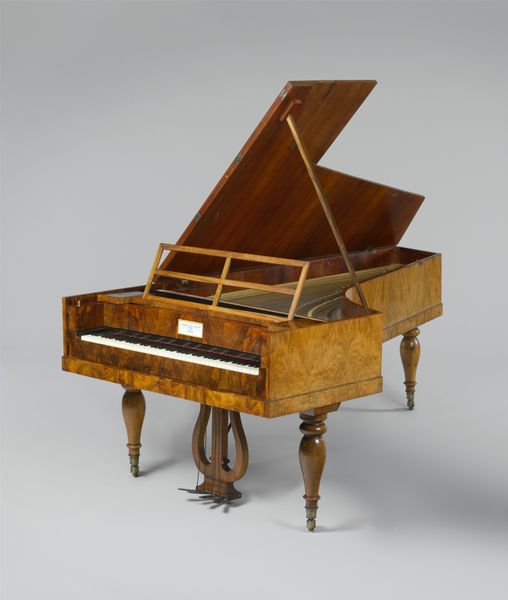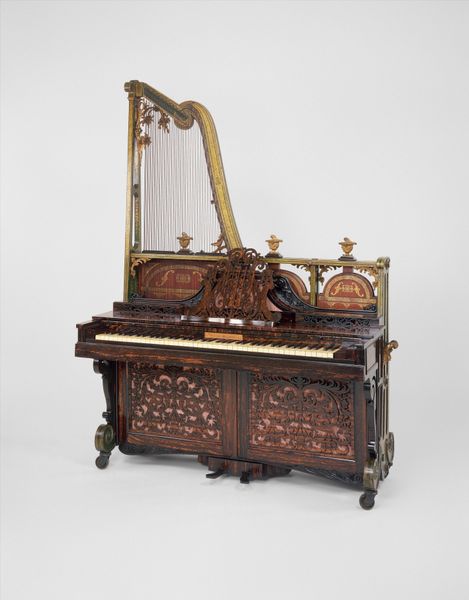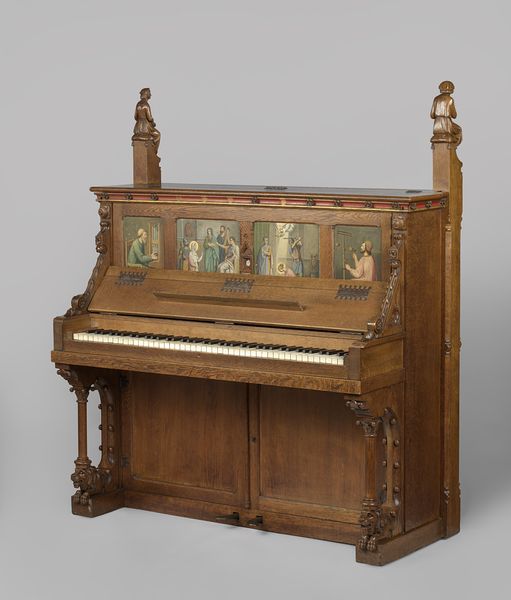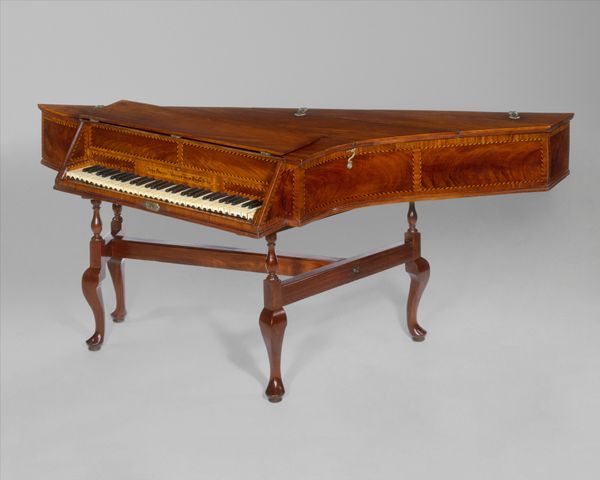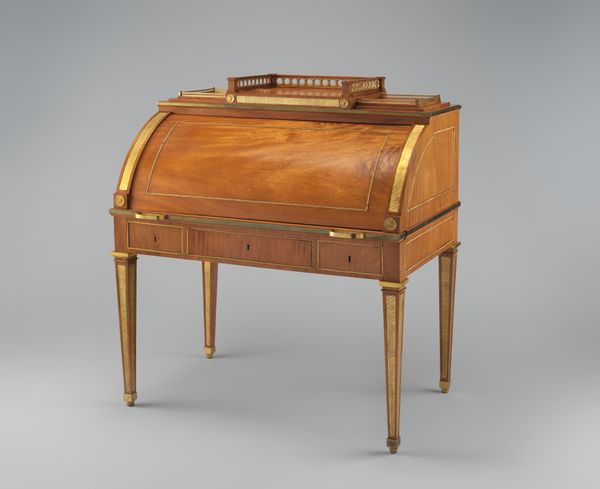
wood
#
baroque
#
sculpture
#
wood
#
musical-instrument
#
decorative-art
Dimensions: length 211.0 cm, width 86.0 cm, height 92.0 cm
Copyright: Rijks Museum: Open Domain
This harpsichord was made in Antwerp by Petrus Johannes Couchet, who died in 1655. Look closely at the Latin inscription on the inside of the lid, ‘Omnis spiritus laudet Dominum’ or 'Let every spirit praise the Lord'. Musical instruments in the 17th century weren't just objects of aesthetic beauty, they were powerful social symbols. Antwerp, a major port city in the Spanish Netherlands, was a hub for both commerce and culture. A beautifully crafted harpsichord like this would have been a potent display of wealth and social status. But it’s not just about showing off; the inscription suggests music had a strong connection to religious devotion. To understand this harpsichord fully, we can delve into Antwerp’s musical life and religious history. Research into the Couchet family workshop and the city’s merchant class could reveal much about the harpsichord's original owner and how it was used. By looking at the history of institutions and society, we can better understand the place of art.
Comments
rijksmuseum about 2 years ago
⋮
Petrus Couchet belonged to the famous Ruckers family of harpsichord makers in Antwerp. This instrument, originally with one keyboard and two sets of strings (plucked using raven quills), was enlarged in the 18th century with a second keyboard, more keys, and a third set of strings to offer more tone colour.
Join the conversation
Join millions of artists and users on Artera today and experience the ultimate creative platform.

